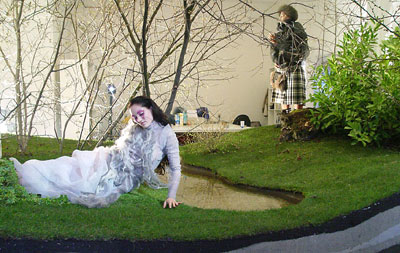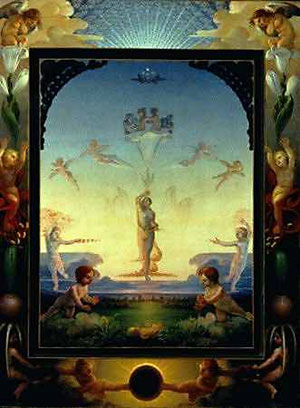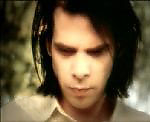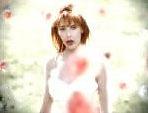De morgen Lars Eijssen
The video documentation of Lars Eijssen's performance De Morgen is a curious matter. What we miss in live emotion is almost compensated by the Brechtian form. A video registration like those from the earliest days of television, with nearly east-German cut, from the days when Bertolt Brecht was still directing his own plays, that in some cases have been conserved.
De morgen Philipp Otto Runge 1808
Stiff recordings of an also not completely non-stiff performance. Consciously perhaps, because De Morgen, which was performed earlier this year in Casco in Utrecht, could be called an illustration that has been granted a breath of life. An illustration of the original, which was made by the esoteric German romantic Philipp Otto Runge, who put staggering amounts of symbolism into his work and managed to give every bit of realism several hidden meanings. In his The Morning from 1808, Runge gives birth to the morning, as a child, naked in the landscape, flanked by Aurora, goddess of the morning's light. Above her a blooming lily blossoms naked babies, who also hang cherubically on the stalks. A very typical Runge, Runge nowadays being a somewhat forgotten artist, but at the time he was one of Caspar David Friedrich's most critical influences. While Friedrich portrayed the more hard-core version of Romanticism, Runge created a softer image, which Runge himself called arabesques in a hieroglyphic style. Indeed, his sketched version of The Morning will fit nicely on an Egyptian temple's facade. We can find later versions with the English painters who gain famed as the Pre-Raphaelites, but MTV also has its modern day music video versions.
Where the wild roses grow Rocky Schenk
The Morning is a classic leitmotiv artists long ago presumed had been left at history's dumpsite. After several artistic variations of the theme had been exhausted, the urgency (as the history) seem to have been forgotten. But the theme continued to stir, however occasionally, the provisional climax in the series now being Where the wild roses grow, directed by Rocky Schenk. A beautiful Cave song, sung by Nick Cave and Kylie Minogue, who in their neo-neo-pre-raphaelitic duet set the standard for the times to come. It is impossible not be be touched by the divine performance; the beautiful music, the beautiful execution, and the moving result. A history of life and death, the Night that hunts the Morning, and then leaves for dead, the impossibility of reversing the image. And then the fantastic voices of the two who transform Runge's eternal theme into a love duet of an irresistible erotic force. A duet that also has all sorts of connotations, which Runge could not have even tried to imagine.
The beautiful mixes that are used here, the unlikely combination of punk Nick with idol Kylie, but also the combination of contemporary pop and nineteenth century romance. All beauty must die, sings Nick, and Kylie agrees, they called me a wild rose, sealing her own fate. Beauty and Death, united here in a rare love filled image, in the gruesome fate of a snow white beauty.
II
Lars Eijssens The Morning, a short but vehement performance, has been performed once live, and now only exists as film-video.1
1 Nathalie Zonnenberg, 'De Morgen', Metropolis M, 2003, nummer 3, 56-57
And with that existence it does Eijssen's artistic endeavors more justice than the original live performance. Even though the video only can be a dilution of the initial occasion, it adds to the distant experience that modern tradition loves so much. The Morning shows itself through a filter, in the form of a young woman who, kneeling at the edge of a small brook, mixes her hair with the water. She bends forward, throws her head back, shakes her hair forward and tosses it in the water. She lets the water carry her hair on the ripples of the stream. The young rays of sunlight reflect in thousands of sparkles off the shining hair, and in their reflection they fall on groves, shrubs, trees and anything else they can find in the forrest. A fairy tale begins, but as every morning will be caught by evening, the Morning meets her fate. We do not realize this immediately, because such a figuration is rather out of place here. We do no want to know what awaits her, because we are distracted by the arrival of a stuck in recurring repetitive cries heavyweight singer. Without us realizing or wanting to know, the image of the morning is already being threatened by night.
In reality, Morning and Night are slid together in a rather small timeframe. But the astonishment the Night's get up induces prevents us from seeing that. Dressed in a Scottish kilt, he distracts the Morning, but hides his plan in his musical act. Here unplaced sound echoes, an obstinate bass, that with a constantly repeated irritating sequence (something like woohoohoo woohoohoohoo yeeaheaheah yeeaheaheah) leaving Eijssens intentions unclear. Only as an afterthought do you realize that the role of the singer, that only appears to make the Morning disappear. And realizes the cruel intention of Eijssen, killing off what you show with so much force, taking back with one hand, what you have given with the other. That requires the art of balance. Smothering beauty requires both enthusiasm and distance.
III
And so the Morning and the Night perform their modern artistic program most sincerely. For Eijssen has made the unfairly forgotten stylistic period, which has been verboten ground of German romanticism and the anti-modernism movement of England, into his own artistic weapon. An alternative to the 'contemporary spirit of the ages', whatever that may be. The elder romantics did the same, most seriously, but Eijssen plays in irony. And where the original artists saw their work as a rejection of modern times, founding themselves on a retrospective artistic program that they wanted to recreate from a lost era, De Morgen is actually a modern program. Which is not so very remarkable, seeing as Eijssen continuously emphasizes wanting to reflect the flavor of his own era, also in his digital work. We see him here as the directing, but invisible hand behind a untimely theme. However, untimely is something that no longer exists. But nevertheless.
The Morning opposes a too fashionable and too pretentiously modern image of the world. Eijssen personifies Baudelaire's maxim to be 'of the times' almost completely. But it is apparently necessary to formulate that 'modernism' in, should we say, conservative terms. With Eijssen, it has to be the longing for mysticism, the search for elements that surpass the transparency of modern times, to show the hidden treasure of an ended era. Furthermore, the Morning is deliciously politically incorrect. She as fragile young woman, clearly in the power of the immobile but nearing Night. A statue that seems not to move, but only seems, because his courting cry seals her fate. The Night is what Americans generally call a 'afro-american', a black singer from Surinam. But he does not seduce with his song, it is the call of a jazzy-blues like repetition, which places him just out of the cliche. Where the Morning also is completely politically incorrect, as constructed by the director in all her of her own cliche. This is not a free girl that playfully is washing her hair in the water, instead she has become a symbolic figure. A tightly directed figure, spied on by our own, not always untainted, gaze. And even though we are aware of her final fate, we let her fall into the trap Eijssen has set up.
IV
You could call Eijssen's live performance Brechtian. Which can be just as attractive as it is disturbing, which seduces, but at the same time throws off her masks to flash her true nature. And the video registration of the performance is also Brechtian. Perhaps not in all the ideals of the former master, but in the details we find beautiful pieces of alienation which cannot be misunderstood. The wooden props we see, the colors of what must be the Morning's natural habitat, the green of the grass, the tranquil water that resembles a clattering brook, the bushes and the trees, everything is inclined to show something like nature, or to try to erase true nature.
The Morning shakes her hair in surroundings that are as seductive as they are transparent. Perhaps the earlier paintings and music videos still showed a desire for reality and realism but the decor in which Eijssen places that one scene from the daily drama only suggests a fairy tale, and instead mainly reflects the cold atmosphere of the landscape, built from technical material. You are given clairvoyance in a brusque tempo as you surrender to the seduction of the image, and you will understand the structure of this artificial landscape. The Morning who lets her hair fan out in the water, and then the repulsive and simultaneously calling cry of Night, the interference, who lets his life song be heard. Against better judgment, we want to be seduced. Even though, like the Morning, we do not know what awaits us. The Night is more than interference. His singing contains something that you feel when you read good poetry, when the vibrations of earlier work tremble along. That tremble, the rephrasing as you read, is an almost necessary factor to appreciate real poetry. Take, for instance, the poems of Cavafy or Borges, in which we continuously read other classic poets between the lines. As here, in the Morning, previous versions are granted new chances. The best example is probably the water, that not only by force of the hair of the Morning, not only by force of the song of the Night, but just as well by the force of Runge and Cave & Minogue, is brought into motion. And if not by them, then by our memories of Ovidius and his Narcissus, or of Matthew Barney and his hooves.
V
But whatever else you choose to make up, the final product is what the artist is assessed on. If the collaboration of the classic atmosphere and the interference really is happening as we expect it to, is not at all important. The strongest point this Morning makes is that Eijssen is introducing a new genre, a genre that does not yet have much artistic criteria, and thus has a grand space, open for experimentation. And that space he used well.
translated by Nadya Peek
Voor een 3d-versie van de getekende variant van De Morgen zie: members.chello.nl/eijssen/PressTop2.html




